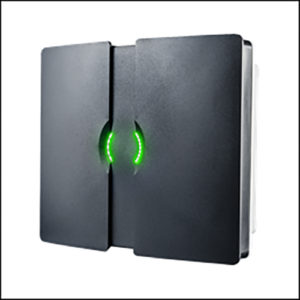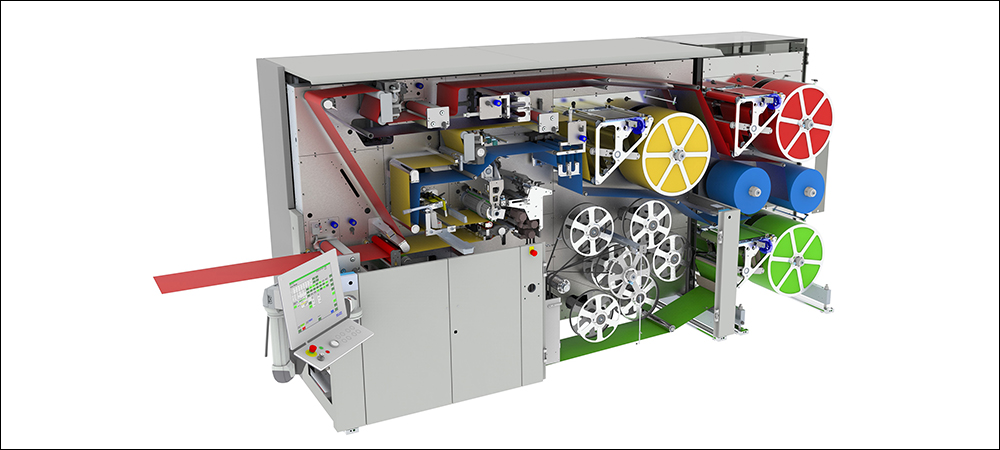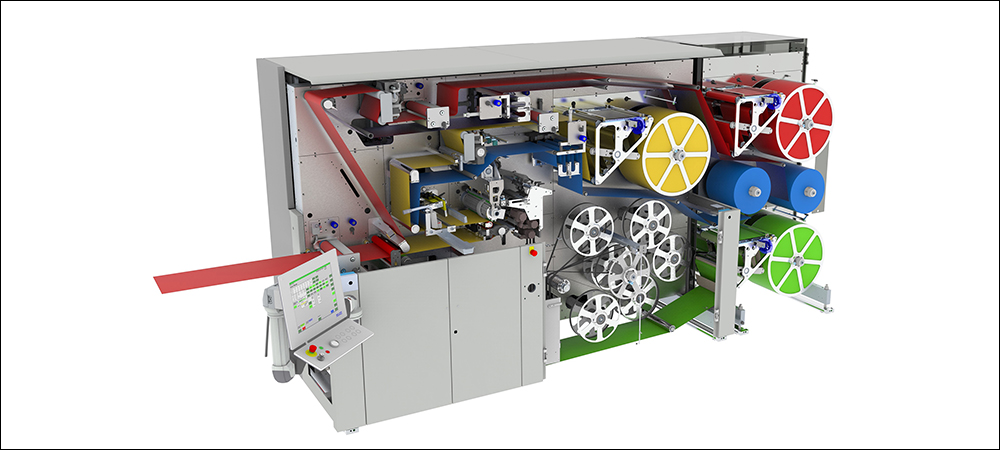Presented here are news announcements made during the past week by the following organizations: Nedap, Matik, MELZER, Kit Check, CEA-Leti, the Industrial Internet Consortium, YoSmart and Semtech.
Nedap Upgrades RFID Portfolio With Latest OSDP Standard
Nedap has announced an upcoming OSDP upgrade to its long-range RFID reader portfolio for automatic vehicle identification (AVI). The portfolio will be made compatible with V.2.1.7 of the Open Supervised Device Protocol (OSDP) standard. This upgrade supports the interoperability of Nedap’s reader portfolio with a growing number of access-control and security products.
In recent years, the company reports, an increasing number of access-control panel manufacturers have supported OSDP technology, and the upgrade enables integration supported by a secure communication standard. Nedap will make OSDP V2.1.7 available for its TRANSIT and uPASS long-range RFID product lines.

OSDP has been developed by the Security Industry Association (SIA). According to SIA, OSDP offers high security and advanced functionalities. The protocol enables bi-directional and encrypted communication based on the Secure Channel Protocol. In addition, OSDP allows the monitoring of wiring to protect against attack threats. Since OSDP is offering secure and bidirectional communication between the reader and third-party controller platforms, the upgrade enables security professionals to simplify secured vehicle access.
Nedap offers specialized solutions for AVI applications, as well as a portfolio of long-range RFID and license plate recognition systems. Its products are designed to simplify secure vehicle access, the company indicates, and to help security and parking professionals improve operations. Technical specialists can order a demonstration kit for validating OSDP in vehicle access-control applications.
Matik Distributes RFID Converting Machine from MELZER
Matik, a distributor of European equipment in North America, is offering MELZER‘s SC-X radio frequency identification (RFID)-based converting machine. The high-speed, multi-track machine manufactures smart luggage tags, labels, tickets and garment tags.
“The new SC-X from MELZER meets the growing demand for security and authentication products in North America,” said Steven Leibin, Matik’s president, in a prepared statement. “It gives manufacturers the flexibility to expand into new markets and to deliver custom innovative tags, labels and other RFID smart products with maximum productivity and the highest quality.”

MELZER’s SC-X converting machines can run in either full rotary (up to 14,000 pieces per minute) or intermittent modes with a web width of 13 inches (330 millimeters). Able to produce smart products in a range of materials and inlay sizes, the SC-X comes with up to six tracks for maximum capacity. The device can switch to utilize MELZER’s patented transponder selection in intermittent mode, which inspects and ejects bad inlays before insertion in order to provide 100 percent read accuracy. It features low waste and quick changeover, according to the company, and can be upgraded to meet changing needs.
Founded in 1956, MELZER engineers and manufactures modular RFID and smart product converting machines. Its flexible production equipment is built to meet complex customer requirements for optimized production. Matik is MELZER’s North American distributor and offers a range of printing, converting and packaging equipment.
Kit Check RFID Platform Adds Sanitization Feature
Kit Check, a provider of automated, intelligent medication-management solutions, has announced that its RFID-enabled, cloud-based platform solution has tracked its hundred-millionth dose (at OhioHealth Grant Hospital with a 10-ml vial of sodium chloride 0.9%), and that the company has now added a new feature called Sanitization Check. This feature was created due to the heightened need for infection-control protocols amidst the COVID-19 pandemic, and will help frontline providers and medical organizations avoid spreading contamination via medication trays.
“We’re committed to doing anything we can to help healthcare workers on the frontlines, and we’re incredibly grateful for the work our customers are doing,” said Jennifer Symon, Kit Check’s director of clinical solutions, in a prepared statement. “From the start, our primary concern has been protecting patients from harm, which has driven our mission to help hospitals track medications and monitor for potential drug diversions and medication shortages. Now, with the addition of Sanitization Check, we’ve expanded our protective efforts to include doing our part to mitigate the transmission of disease.”
Sanitization Check is designed to enhance customers’ existing systems. Hospitals can activate the feature during the dispatching of kits and trays. If Sanitization Check is turned on, a checkbox appears that allows pharmacists or technicians to indicate whether a tray has been sanitized. Hospitals can decide whether to make the setting optional or required; if “required” is chosen, the system will not allow a tray to be dispatched unless the sanitization box has been checked. More than 20 hospitals, many in hot spots like Washington and California, are already using the new feature.
“As our customers continue to feel the impact of COVID-19, we’re committed to listening to their needs and providing agile solutions such as ensuring medication trays are cleaned and sterilized,” said Kevin MacDonald, Kit Check’s co-founder and CEO, in the prepared statement. “Our RFID technology has proven to be scalable, precise and quick for tracking hospital medications and restocking pharmacy kits, and with 100 million medications tracked at more than 500 hospitals, we are proud to be recognized by hospital pharmacy directors as a reliable and time-saving solution to a tedious process.”
The traditionally manual process of kit and tray restocking is time-consuming and prone to human error. Hospitals that have automated this process have reported a time savings of nearly 80 percent, according to Kit Check. Instead of 30 minutes of manual labor, Kit Check’s software reduces these processes to just a few minutes—a savings that adds up to 2.5 days per month in staff time, which can be shifted to improving patient safety and clinical care outcomes. In addition, Kit Check’s solutions can help detect drug diversion in hospitals and can help them best prepare for shortages.
CEA-Leti Investigates 6G Wireless Networks in Millimeter-Wave Bands
As countries around the world begin rolling out 5G wireless networks, CEA-Leti is looking ahead to sixth-generation technologies that will surpass the data-transfer capability of 5G. Wireless communication in millimeter wave (mmWave) bands, which range from 20 GHz to 300 GHz, is expected to be a key enabling technology for 6G wireless systems, because the huge available bandwidth can accommodate ultra-high data-rate communications. Within that range of mmWave bands CEA-Leti’s research is investigating D-band, a new spectrum at 140 GHz that may play a major role for 6G wireless communication.
In a paper written for the 6G Wireless Summit, a March event that was cancelled due to the coronavirus pandemic, CEA-Leti and French engineering firm Siradel said researchers are considering several beyond-5G applications for these systems. These include high-capacity backhaul, enhanced hot-spot kiosks and short-range device-to-device communication. These applications’ data-transfer speed requirements, typically greater than 100 Gbps per cell or per link, exceed the capability of 5G, and are not affected by the main constraints imposed by the sub-THz frequencies.
The paper, titled “Technology Roadmap for Beyond 5G Wireless Connectivity in D-band,” provided an overview of those potential applications and the challenges to realizing them, and presented scenarios for applications in the new spectrum. It also discussed the tradeoffs between scenario requirements and current silicon-technology limits to building a 6G roadmap.
“Challenges to using D-band wireless communication include free-space wave-propagation losses that increase with the square of the frequency and have to be compensated for using high-gain antennas,” said Jean-Baptiste Doré, a CEA-Leti scientist and one of the authors of the paper, in a prepared statement. “That entails severe constraints on antenna directivity and alignment.”
The constraints include physical barriers to sub-THz wave propagation, which can be blocked or strongly attenuated by walls, trees or windows. Even in a clear propagation path, high-gain antennas are required. To address this challenge, CEA-Leti is designing technologies with high directivity and an electronically steerable antenna. Because CMOS technologies cannot produce devices that deliver the maximum transistor frequency needed for sub-THz applications, CEA-Leti is investigating optimized RF circuit designs with architectures geared toward these applications, and new materials and devices to address D-band frequencies and beyond.
Two recent papers were accepted for presentation at IMS2020 and RFIC2020 concerning low-noise amplifiers and programmable high-order frequency multipliers for channel bonding, respectively. “For device-to-device communication, we have demonstrated that is possible to reach multi-Gbps throughput using spatial multiplexing and a simple RF architecture,” Doré said in the prepared statement. “The main outcome is that with the proposed mixed-signal, analog & digital, the required power delivered by transistors is limited to microwatts (10^-6 Watts) which makes CMOS technologies possible.”
Industrial Internet Consortium Publishes IoT Digital Transformation White Paper
The Industrial Internet Consortium (IIC), an organization focused on transforming business and society by accelerating the adoption of the Industrial Internet of Things (IIoT), has announced the publication of a white paper titled “Enabling Digital Transformation with IoT Performance and Properties Measurement.” Written for all IIoT stakeholders, the document explains why measuring the efficiency and efficacy of industrial digital transformation solutions across industries is essential.
“Digital transformation leverages connected things to transform processes and operations to produce better outcomes and enables more efficiency, new business, operational opportunities and flexibility. But digital transformation solutions are developed through cycles of improvements and trials that require an objective assessment of what works and what does not,” said Jacques Durand, co-chair of the Digital Transformation working group and the lead author of the technical report (titled “A compilation of testbed results – Toward best practices for developing and deploying IIoT solutions“), in a prepared statement.
“Establishing the right metrics and related measurements is crucial to these improvement cycles,” Durand added. “Will the process or product enhancements empower the Digital Transformation journey or create risks for it? What are the gains in efficiency or efficacy and are they worth the investment costs and process changes?”
Digital transformation solution metrics include business model validation and improvement, which focuses on monitoring the financial and strategic KPIs of the solution, measuring overall IIoT maturity and implementing corrective actions if needed. It also involves solution validation and improvement, which focuses on monitoring and improving the operational side of the solution from the perspective of functionality, non-functional service level agreements and service level objectives, as well as other system characteristics, including trustworthiness properties.
“Metrics are useful for communicating expectations as well as managing a system, both when determining whether a system is ready to deploy as well during operation,” said Frederick Hirsch, one of the paper’s authors and a o-chair of the Trustworthiness task group. “Important for functional management, they may also be considered for insight into trustworthiness properties such as security and safety.”
YoSmart Integrates Semtech LoRa Devices Into Smart-Home IoT Products
Semtech, a supplier of analog and mixed-signal semiconductors and advanced algorithms, has announced that YoSmart, a high-tech enterprise company focused on smart-home products, has integrated Semtech’s LoRa devices into its new YoLink line of Internet of Things (IoT) products for in-home use. The solutions leverage LoRa devices’ advantages for simplified deployment to quickly connect a variety of home applications, including doors, security systems, electrical outlets and water piping, in order to accurately monitor data in real time.
“Semtech’s LoRa devices provide the ideal platform to build smart-home IoT solutions that fill the gap left by traditional home networks, such as Wi-Fi,” said John Xu, YoSmart’s chief executive officer, in a prepared statement. “With LoRa, YoSmart is able to develop IoT solutions that offer homeowners immediate insight into the efficiency of their home. The YoLink portfolio is available now to U.S. consumers and offers the capability to connect many applications to the same platform for smarter management.”
The YoLink product portfolio includes a “whole home” starter kit, as well as LoRa-based sensors and a long-range hub to provide consistent network coverage up to 1,000 feet from the device. This range enables the reliable connection and monitoring of applications across larger properties outside the range of traditional home Wi-Fi networks, the company reports. The YoLink starter kit is a collection of home sensors for delivering data regarding individual home applications.
The YoLink kit consists of sensors for motion tracking, door lock management, garage door monitoring, gas and water valve use, pipe leak detection, and electrical outlet monitoring. Solutions can be integrated with existing home infrastructure and deliver real-time data about conditions, including energy use and status. In addition, door lock and pipe leakage sensors alert homeowners to potentially harmful developments, providing peace of mind regarding the safety of their home and enabling a swift response to prevent threats.
“LoRa devices offer a complete bundle of development accelerators that simplify the process of creating, deploying and managing IoT applications to provide customers direct operational advantages,” said Marc Pegulu, the VP of IoT in Semtech’s Wireless and Sensing Products Group, in a prepared statement. “LoRa-based applications deliver the simplicity and ease-of-use homeowners seek when connecting home systems and provide an ideal platform to address the indoor connectivity challenges of traditional networking platforms.”


